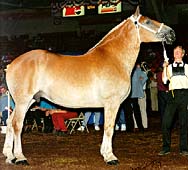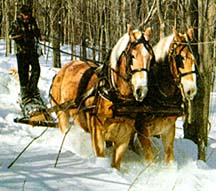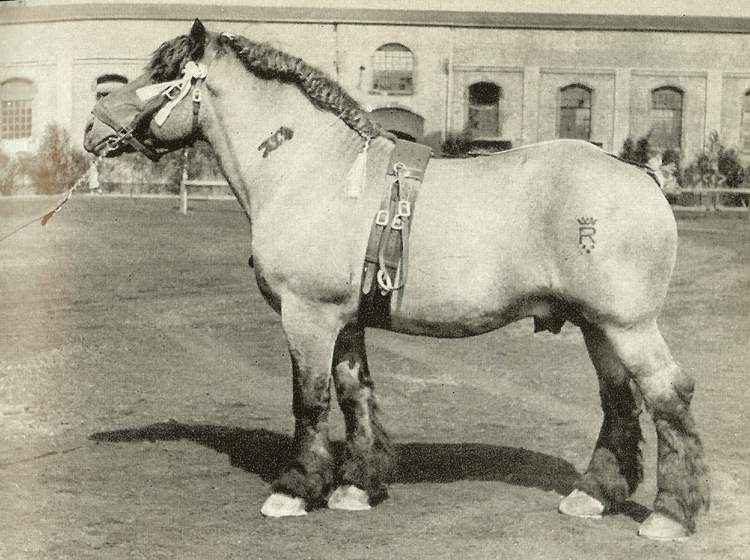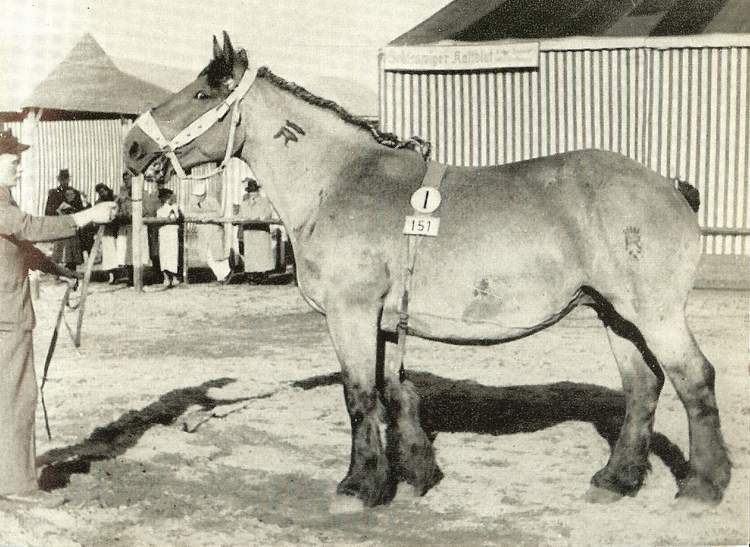

Belgian


Introduction: If you have any comments or suggestions, please click here.
Names: Belgian, Belgian Draft, Belgian Draft Horse. I'll stick with the shortest one on this page! I believe this is also the horse that has been called the Rhenish-German Heavy Horse, Brabant, or Brabanšon; at any rate, I will consider it to be the same for now until someone corrects me. One source called this latter breed "the true Belgian." (I have also had at least one other source state that the Belgian Draft has sometimes been called the Brabant, which it says is the name of the area of Belgium where it was first kept. This may be bringing us closer to the true source!)
Origin: Belgium (especially Brabanšon). Breeding completely in hands of farmers. In Germany (as Rhenish-German heavy horse), particularly in North Rhine-Westphalia, Lowre Saxony, Saxony and Thuringia. Studs: Dillenburg (closed down in 1959) and Kreuz). Indigenous breed, in the past hundred years greatly influenced by an even older breed, the Ardennes. Le Cheval de Trait Belge Association founded in 1866.
Breeding: Belgian horsemen bred this giant with great care for purity of standards. It descends from the ancient Flemish horse and is thought to have no Eastern blood at all. A late starter in the United States--it was first imported in 1886--its registrations are now about double those of any other breed. (This last sentence was written before I started citing the date of the source; I doubt it is any later than the 1970's or 80's. I will leave it until I can find a current statistic.)
Description: Probably still looks much like those of its type bred during the Middle Ages. It is extremely "drafty" in appearance. (I wanted to include the two pictures below for additional interest and conformation study. They are taken from The Young Specialist Looks At Horses, which was written in the early 1960s, and were specifically called Rhenish-German Cold-bloods. The one on the left is the stallion; the one on the right is the mare.)


Action: Energetic, not always regular movements in walk and trot.
Body: Blocky and close-coupled, with a wide girth. Deep, broad chest. Broad and short well-muscled back. Powerful, muscular loins. Sweeping, long and slight cleft, often rather sloping massive quarters. Tail well set on. Very powerful, long, compact shoulders.
Color: Chestnut, roan, and sorrel are the usual and most acceptable colors, frequently with flaxen mane and white-blazed face. Predominately chestnut.
Head: Shapely. Well proportioned, but not very attractive.
Hooves: Very large and rather flat.
Legs: Short and powerful. Muscular with hocks and tendons frequently rather soft. Feathers on the lower legs.
Neck: Short, thick-set massive neck, with shaggy double mane and low, fat withers.
Size: The Belgian is the heaviest of the draft horses, attaining a weight between 1,900 and 2,200 pounds. It is not, however, the tallest, standing up to 17 hands. 16 to 17 hands.
Temperament: Placid. Energetic temperament and quiet disposition.
Features: Easily maintained. Enormous, strong, easily trained heavy draught horse.
Uses: Used with half-bred mares to produce the Belgian Country Bred, a useful working horse of about 16 hands. Also used to pull carts loaded with heavy logs (and just about anything else too heavy for the average horse!).
Accomplishments:
Curiosities: Visitors to Ostend on the last Sunday in June may see draft horses, normally used in the fish market, parading in an attractive ceremony, the Blessing of the Sea. (Again, I am not sure if this still goes on; I will look into it when I have more time.)
Profiles:
Conclusion: